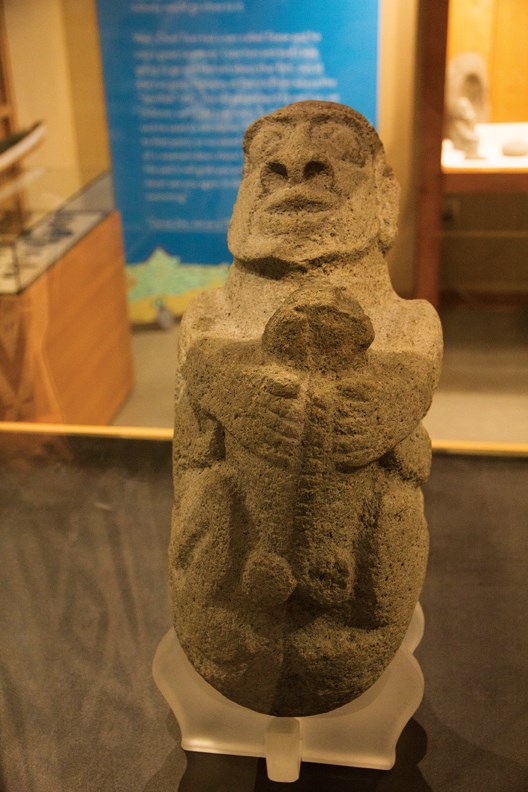The tem swiya Museum is currently showing an exhibit titled the Salmon People, which features artifacts of the shíshálh including a 3,000-year-old statue known as the Grieving Mother and the remains of an ancient canoe discovered in the 1920s.
The Mother was found 100 years ago in Selma Park by a group of boys who were camping at the Knights of Columbus campground. The chief at the time – Chief Dan Paull – recognized the piece as the Grieving Mother.
“She is called the grieving mother because we used to have wars with the northern tribes,” tem swiya Museum curator Raquel Joe said. “The northern tribes came down and took the boy and killed him. The mother was so distraught, she put herself in the water and never came out again. The father made the statue in memory of his wife and son.”
The statue was lost during one of the smallpox epidemics, according to Joe. Paull didn’t want it to be lost again, so it was donated to the Vancouver Museum. It was repatriated to the shíshálh about six years ago.
The canoe is on display at the tem swiya Museum for the first time. According to Joe, it was discovered in the 1920s and predates all of the other canoes they have. It was made by hand with stone tools – like ones that are also part of the exhibit – and painted with bear grease and ash for black and a special paint called temlh for red.
“Whoever owned this canoe must have been very important because temlh was a very spiritual paint back then,” Joe said.
The Salmon People Exhibit is on now at the tem swiya Museum, which is located next to the Raven’s Cry Theatre in Sechelt.



